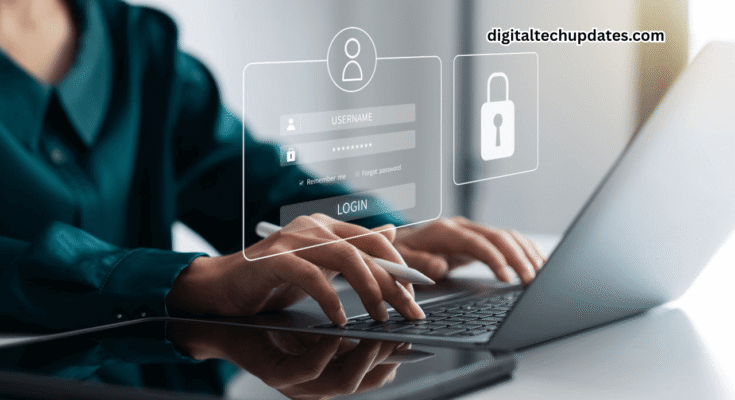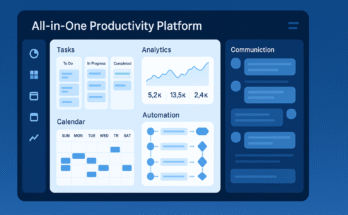Introduction: Why Cybersecurity Matters for Small Businesses in 2025
In 2025, cybercrime is no longer just a threat to large corporations. Small businesses around the globe are increasingly targeted, often because they lack the resources or expertise to defend themselves.
From phishing emails to ransomware attacks, the consequences of a security breach can be catastrophic — including financial loss, reputational damage, and legal issues.
The good news? By understanding the top cybersecurity threats and implementing practical prevention strategies, small businesses can stay safe, protect their customers, and continue growing securely in an increasingly digital world.
In this guide, we’ll explore the most common cybersecurity risks for small businesses in 2025 and provide actionable strategies to prevent them.
The Rising Cyber Threat Landscape in 2025
Small businesses are becoming a bigger target for cybercriminals for several reasons:
Limited security infrastructure: Many small businesses rely on basic antivirus and firewalls.
Remote and hybrid work environments: Distributed teams increase the attack surface.
Valuable data: Customer data, financial records, and proprietary information are highly lucrative for hackers.
Growing use of cloud services: Misconfigured cloud accounts are often exploited.
A report by Cybersecurity Ventures predicts that cybercrime damages will reach $11 trillion globally by 2025, and small businesses will account for a significant portion of these attacks.
Top Cybersecurity Threats for Small Businesses in 2025
Here’s a breakdown of the most common threats small businesses face this year:
a. Phishing Attacks
Phishing remains the most prevalent threat. Hackers use emails, texts, or social media messages to trick employees into revealing sensitive information like passwords or credit card numbers.
Example: An employee receives an email that appears to be from a bank, asking to verify account information. Clicking the link installs malware.
Impact: Data theft, financial loss, and compromised accounts.
b. Ransomware
Ransomware is malicious software that locks your files or systems until a ransom is paid.
Example: A small e-commerce business has its customer database encrypted and cannot process orders until a ransom is paid.
Impact: Business interruption, financial loss, and potential legal liability.
c. Weak Passwords and Credential Theft
Many small businesses still use weak passwords or reuse them across platforms. Hackers exploit these vulnerabilities to gain access to sensitive systems.
Example: Using “123456” as a password or sharing credentials over unsecured channels.
Impact: Unauthorized access, data breaches, and identity theft.
d. Insider Threats
Not all threats come from the outside. Disgruntled employees or careless staff can unintentionally cause breaches.
Example: An employee accidentally uploads sensitive files to a public cloud folder.
Impact: Data exposure and reputational damage.
e. Outdated Software
Failing to install security patches leaves systems vulnerable to known exploits.
Example: Running an outdated CMS on a business website can allow hackers to inject malware.
Impact: Website compromise, stolen customer data, and downtime.
f. Third-Party Risks
Small businesses often use external vendors for payments, logistics, or IT services. If these vendors are insecure, hackers can gain indirect access.
Example: A payment processor suffers a data breach, affecting all linked clients.
Impact: Customer data leaks and financial liability.
g. IoT Vulnerabilities
Smart devices and IoT technology are increasingly used in small businesses, from smart cameras to connected thermostats. Unsecured devices can be entry points for attackers.
Example: A hacker exploits an unsecured IoT camera to access the network.
Impact: Network compromise and data theft.
Prevention Strategies for Small Businesses in 2025
The good news: most cyber threats are preventable. Here are practical strategies small businesses can implement today:
a. Employee Training and Awareness
Conduct regular cybersecurity training.
Teach employees to recognize phishing emails and suspicious links.
Promote a culture of security mindfulness.
💡 Tip: Short monthly sessions are more effective than long annual seminars.
b. Strong Passwords and Multi-Factor Authentication (MFA)
Use complex, unique passwords for each account.
Implement MFA to add an extra layer of security.
Consider a password manager for convenience.
c. Keep Software and Systems Updated
Regularly update operating systems, apps, and security software.
Enable automatic updates whenever possible.
This simple step can prevent attackers from exploiting known vulnerabilities.
d. Backup Your Data Regularly
Use cloud backups and offline backups for redundancy.
Test your backups to ensure they can be restored quickly.
Ransomware attacks are far less damaging if you can restore your systems from backups.
e. Use Antivirus and Firewall Protection
Install reputable antivirus software on all devices.
Use firewalls to filter incoming traffic and block suspicious activity.
f. Secure Your Network
Encrypt Wi-Fi and business networks.
Use VPNs for remote employees.
Segment networks to limit access to sensitive systems.
g. Evaluate Third-Party Vendors
Conduct due diligence before partnering with vendors.
Ensure they follow cybersecurity best practices.
Limit vendor access to only necessary systems.
h. Implement Cybersecurity Policies
Create a formal security policy covering passwords, data handling, and device usage.
Review and update policies regularly.
Tools and Solutions Small Businesses Can Use in 2025
Investing in the right tools can make cybersecurity manageable for small teams:
| Tool Type | Example Tools | Use Case |
|---|---|---|
| Antivirus/Endpoint | Norton, Bitdefender | Protect devices from malware |
| Backup Solutions | Backblaze, Acronis | Secure cloud/offline backups |
| Password Management | LastPass, 1Password | Manage strong, unique passwords |
| MFA & Identity | Authy, Duo Security | Add extra login security |
| Network Security | Cisco Meraki, Ubiquiti | Secure business Wi-Fi and VPNs |
| Email Security | Proofpoint, Mimecast | Prevent phishing and spam |
| Cybersecurity Awareness | KnowBe4, Wombat Security | Train employees on recognizing threats |
Real-World Examples of Small Business Cybersecurity in Action
Retail Store in Canada: Installed MFA and trained staff on phishing. Reduced email compromise incidents by 80%.
Marketing Agency in the UK: Used cloud backups and VPNs to ensure remote work security. No downtime during attempted ransomware attacks.
Startup in India: Adopted antivirus, password managers, and employee training. Avoided a data breach during a global phishing campaign.
These examples prove that cybersecurity is achievable for small businesses — even on a limited budget.
Future Cybersecurity Trends for Small Businesses
Looking ahead, small businesses should prepare for:
AI-powered threats: Hackers using AI to craft sophisticated attacks.
Zero-trust security: Verifying all devices and users before granting access.
Cloud-native security: Integrating security into cloud services from day one.
IoT and remote work vulnerabilities: As IoT devices and hybrid teams grow, securing endpoints becomes critical.
Small businesses that adopt proactive strategies now will be best positioned to face the evolving threat landscape.
Common Myths About Cybersecurity for Small Businesses
❌ “We’re too small to be targeted.” — 43% of cyberattacks target small businesses.
❌ “Antivirus is enough.” — Modern attacks require layered security measures.
❌ “Cybersecurity is too expensive.” — Many free or affordable solutions exist for small teams.
❌ “Our employees will always follow rules.” — Continuous training and monitoring are essential.
FAQs: Cybersecurity for Small Businesses 2025
Q1: What are the biggest cybersecurity threats for small businesses?
A: Phishing, ransomware, weak passwords, insider threats, and unpatched software are the top risks.
Q2: How can small businesses prevent data breaches?
A: Employee training, strong passwords, multi-factor authentication, software updates, and regular backups are key prevention strategies.
Q3: Are there affordable cybersecurity tools for small businesses?
A: Yes. Tools like Norton, LastPass, Backblaze, and Authy offer cost-effective solutions suitable for small teams.
Q4: How often should I update cybersecurity policies?
A: At least annually, or immediately after major incidents or regulatory changes.
Q5: Can AI help small businesses with cybersecurity?
A: Yes. AI tools can detect unusual network behavior, prevent phishing, and analyze threats faster than humans.
Conclusion: Securing Your Small Business in 2025
Cybersecurity is no longer optional — it’s a critical part of running a successful small business in 2025.
By understanding the top threats, implementing practical prevention strategies, and investing in the right tools, small businesses can protect their data, safeguard customers, and ensure long-term growth.
The smartest approach is proactive: start small, train your team, secure your network, and continuously adapt as threats evolve.
Small businesses that prioritize cybersecurity today will not only survive — they’ll thrive in an increasingly digital world.




